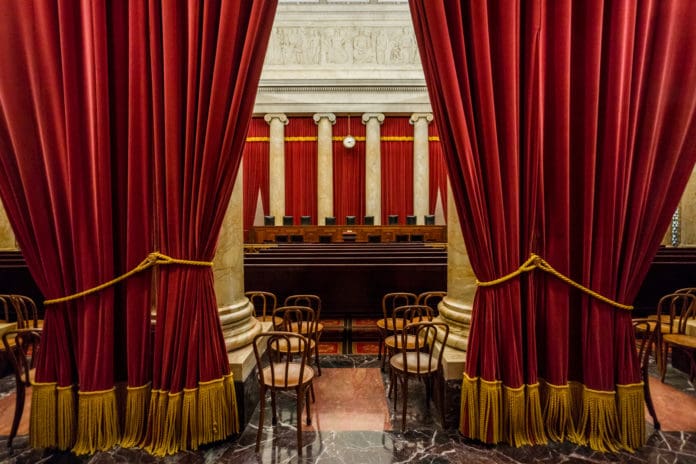
In a landmark decision on Friday, the Supreme Court overturned the 40-year-old Chevron v. National Resources Defense Council ruling, which had granted federal agencies broad regulatory authority. This move upends the agencies’ ability to issue regulations unless Congress has explicitly authorized them to do so. The decision represents a substantial victory for conservatives, who have long sought to limit the power of unelected bureaucrats in crafting regulations that curtail or limit the freedoms of Americans.
The court’s ruling split along ideological lines, with Chief Justice John Roberts writing for the conservative majority. Justices Elena Kagan, Sonia Sotomayor and Ketanji Brown Jackson dissented, with Kagan reading parts of her dissent from the bench, CBS News reported.
“Chevron is overruled. Courts must exercise their independent judgment in deciding whether an agency has acted within its statutory authority,” Roberts wrote, emphasizing that the previous decision required judges to disregard their statutory duties.
The original Chevron doctrine mandated that courts defer to an agency’s interpretation of laws passed by Congress if it was reasonable. Critics argued this gave too much power to federal agencies, allowing them to shape policies significantly impacting American life, such as when the Bureau of Alcohol, Tobacco, Firearms and Explosives (still commonly referred to as the ATF) passes restrictions on the types of firearms citizens can own. The Supreme Court’s decision to reverse Chevron marks a shift toward increased judicial oversight of agency actions.
What It Means for Americans
For the average American, this ruling signals a shift in how federal regulations will be crafted and implemented. Federal agencies like the Environmental Protection Agency (EPA), the Department of Health and Human Services (HHS), the ATF and others will now face stricter scrutiny when issuing new regulations. This change could slow the implementation of new rules and shift more responsibility back to Congress to clearly define regulatory parameters.
Supporters of the decision argue that it restores proper checks and balances, ensuring that elected representatives in Congress, not unelected agency officials, have the final say on significant policy decisions. Critics, however, worry that it could lead to regulatory gridlock, with agencies less able to swiftly address emerging issues like climate change, healthcare needs and financial regulation.
A Win for Gun Owners
The Supreme Court’s decision is particularly noteworthy for gun owners, as it curtails the regulatory authority of the ATF. The ruling effectively limits the ATF’s ability to interpret and enforce regulations without explicit congressional authorization, even when pushed by a presidential administration hostile to the Second Amendment.
Gun rights advocates have long criticized the ATF for overstepping its regulatory boundaries, particularly regarding firearm modifications and accessories. For example, the ATF’s attempt to ban bump stocks was recently struck down in a separate Supreme Court ruling. With the Chevron doctrine overturned, such regulatory actions by the ATF will now face more stringent judicial review.
This legal shift is definitely a positive development for gun owners, who believe the ATF should be abolished since it has historically imposed burdensome regulations that infringe on Second Amendment rights. While the ruling far from abolishes agencies that bureaucratically seek to create laws, it should certainly limit them, putting the lawmaking process back in the hands of Congress, where it rightfully belongs.
Read the full article here